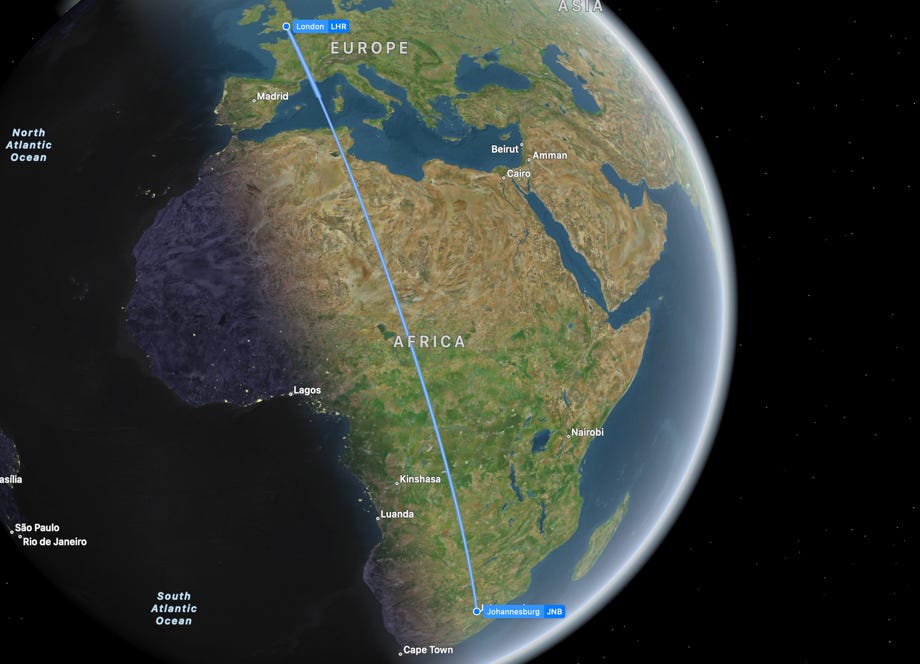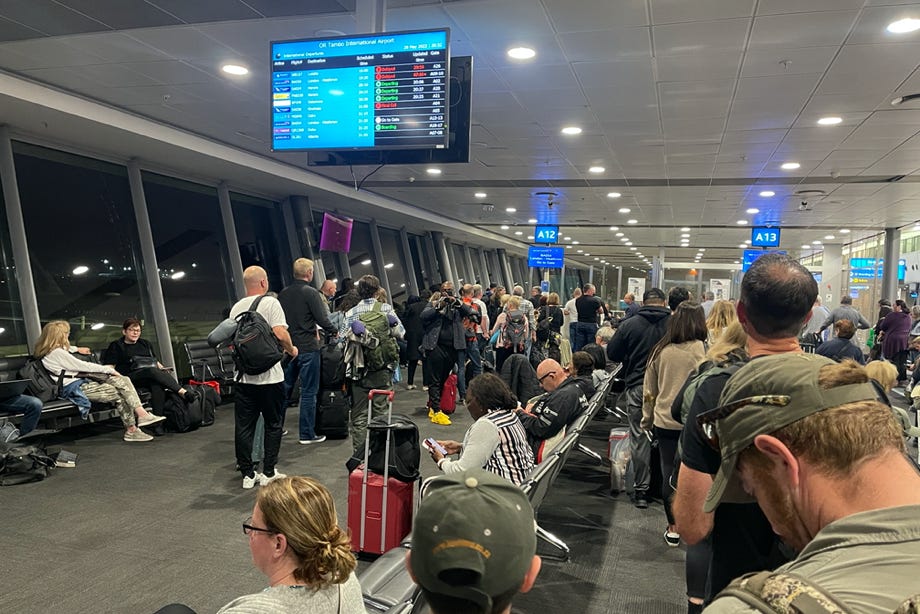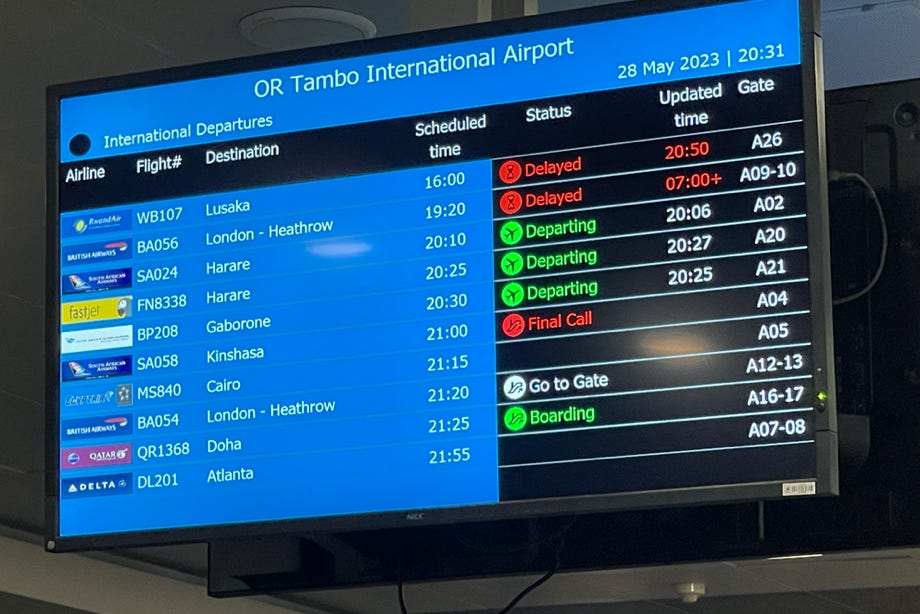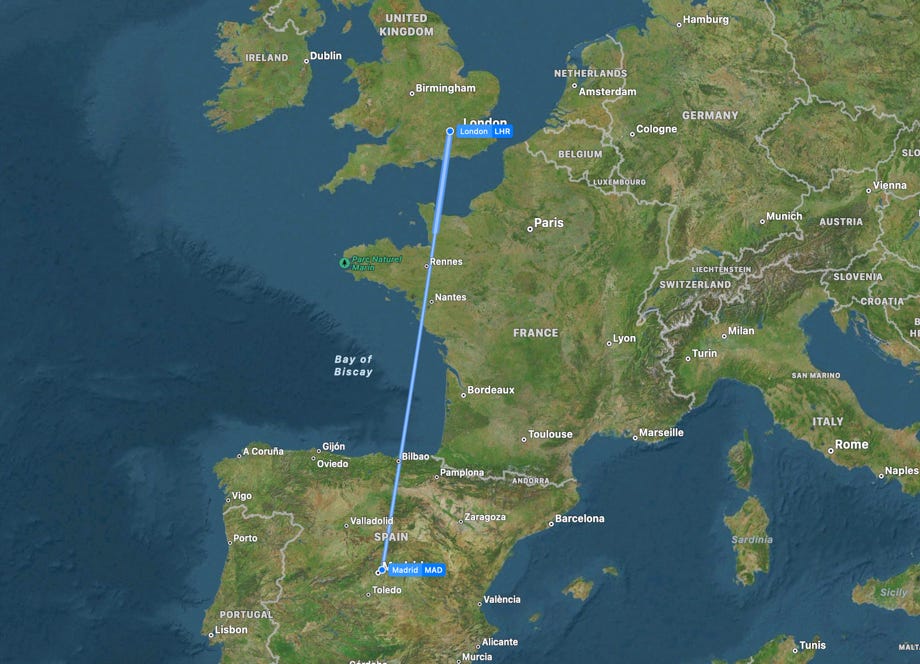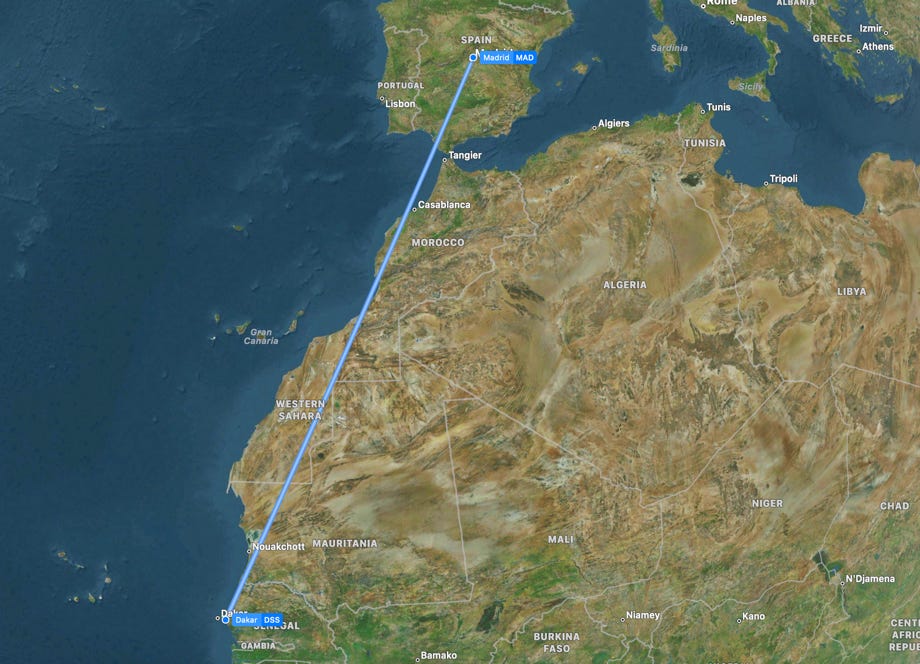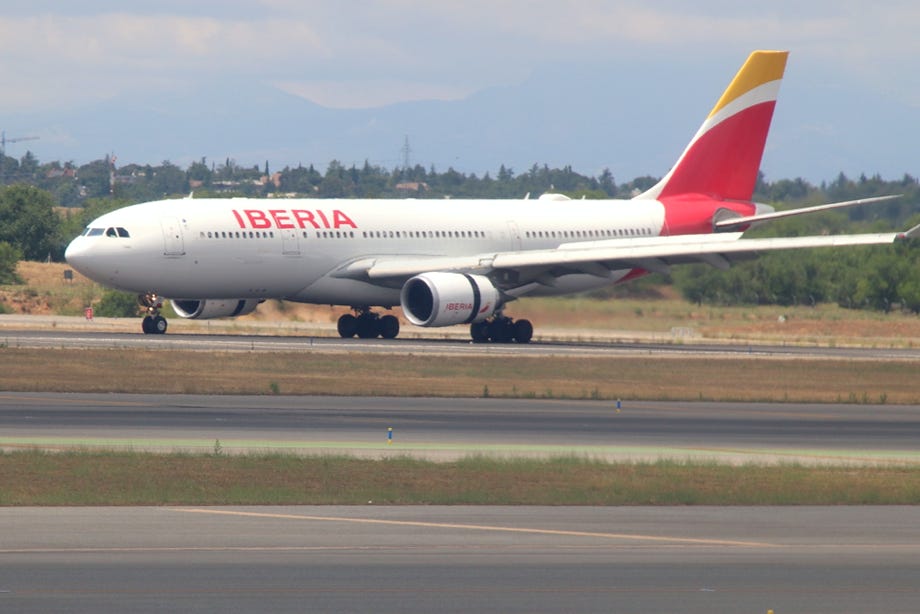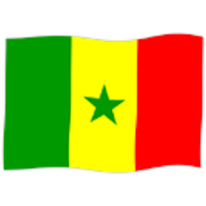
Today was my third day in a row spent on planes and in airports, a classic example of how the easiest (and for me, by far the cheapest) way to travel between different parts of Africa is often via a European hub airport.
I had three flights today. The first (and longest) sector (BA54) began last night when I left Johannesburg on a British Airways Airbus A380-800, registration G-XLEF. British Airways had two A380 flights scheduled to fly from Johannesburg to London last night, my flight (BA54) departing at 9:20pm, and BA56 on G-XLEL scheduled to depart two hours earlier at 7:20pm.
I was VERY grateful to be on BA54 as BA56 incurred a delay of just over 12 hours, departing at 7:25am this morning. If I had been on that flight instead of BA54, my itinerary into Senegal would have been trashed as the flight connections to Dakar are not on a daily basis. It was an important reminder of the ways in which complex itineraries (like mine) contain considerable scope for disruption, even when long transfer times have been factored into the planning (as I did with this itinerary).
The flight was okay but certainly not spectacular. It was, however, noteworthy for the poor condition of the plane with some of the overhead locker doors not working properly and several of the seats (including mine) unable to recline until two cabin staff worked together with all their strength on it, one pushing down on the seat back while the other pulled and tugged on the seat cushion. It was impressive action on the part of the cabin staff, but not such an impressive reflection on the airline’s maintenance team.
The flight landed about half an hour late into London’s Heathrow Airport. In order to connect to my second flight I had to transfer from Terminal 5 to Terminal 3, something that caused mild terror in me due to previous bad experiences of long delays and surly personnel. The good news was that I had three and a quarter hours scheduled for the connection, which should have been plenty of time. The bad news was that the plane took half an hour to taxi from the runway to the terminal gate, after which there was a further 10 minute wait to disembark.
In the end it all worked out and I made it through to the ridiculously overcrowded Terminal 3 where I was delighted to find I had access to the Qantas lounge – with showers as well as food. My second flight for the day (IB3175) was from London to Madrid on an Iberia Airbus A330-300, registration EC-LXK. This was a fairly short flight at just over two hours, and although it left a little late it arrived right on time.
The transfer at Madrid Airport did not involve a change of terminal, which made things much easier than the unplanned hotchpotch of architectural diarrhoea that is Heathrow. The transfer was fairly painless in spite of large crowds – post-covid flying seems to be pretty busy in the lead-up to the northern hemisphere summer season this year.
My transit at Madrid Airport was a comfortably long one at three and a half hours, which provided me with a really enjoyable few hours of plane spotting and aircraft photography – “can there be a more relaxing, more therapeutic way to travel?” I ask myself.
My third and final flight for the day was from Madrid to Dakar on an Iberia Airbus A330-200, registration EC-MOU (flight IB3328). This was a longer flight, taking off at 6:15pm and landing at about 8:45pm – with the two hours time difference between Madrid and Dakar this meant the flight was about four and a half hours.
Having had only five hours sleep on the flight from Johannesburg to London, I was quite weary by the time the plane landed at Dakar’s Blaise Diagne International Airport, but my arrival was far from a quick process.
Australians are one of the few nationalities that require a visa for Senegal, but the good news is that they are free of charge and available on arrival. The bad news, as I discovered, is that they are issued at a special desk that is at the opposite end of the airport from the immigration desks, which means that people needing a visa have to one escorted there by an official. That may sound convenient, but it meant that I had to wait (with a handful of others) until the entire load of passengers on our A330 had cleared Immigration before someone was available to escort us to the visa desk. It took an hour before I finally emerged to meet the driver I had arranged to drive me from the airport to my hotel.
The drive from the airport to my hotel in downtown Dakar was 64 kilometres, and usually takes an hour to an hour and a quarter. However, my driver completed the trip in just 45 minutes using a beautiful new freeway (or, more accurately, tollway). I finally walked (or more accurately staggered) into my room at the hotel shortly after 11:00pm.
It had been a long day’s travel and I was ready for a hot shower, a good sleep, and an opportunity to recharge all my electronics, camera battery, etc, which had all been having such a long, solid workout on the long journey.

